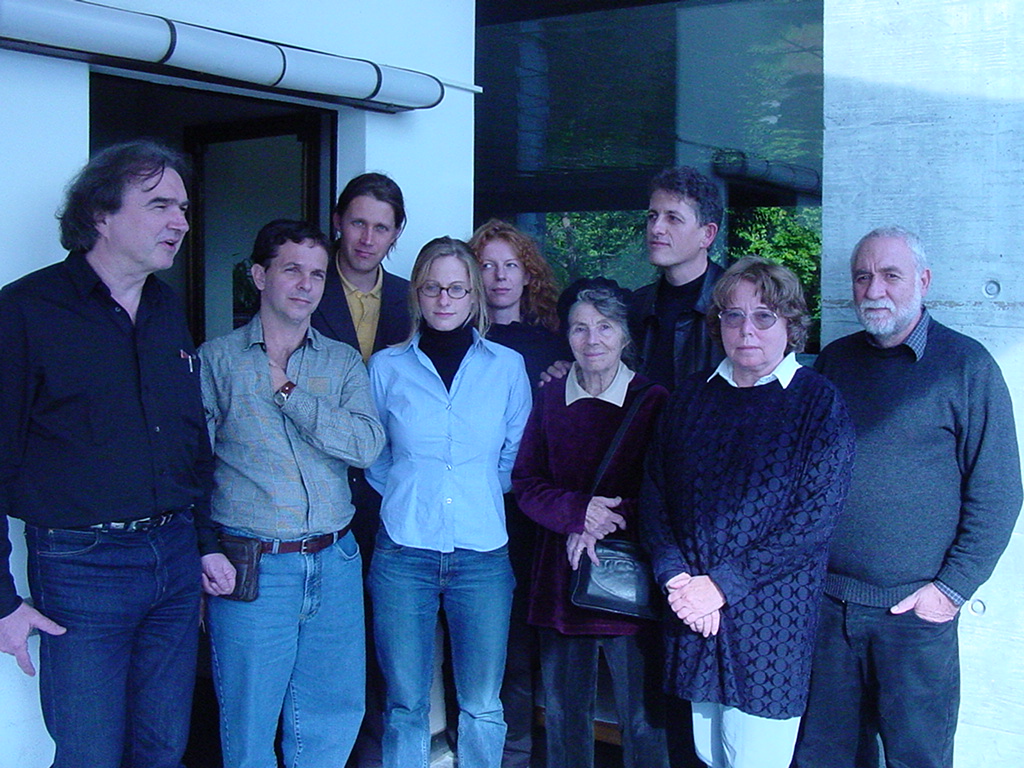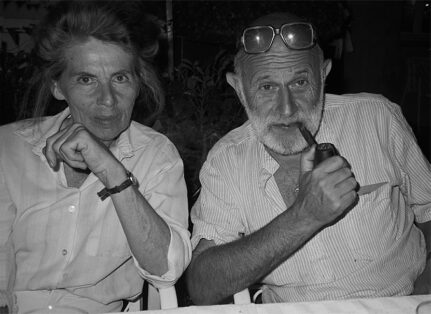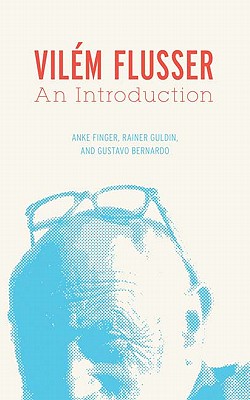„Perhaps everything I am working towards is a theory of translation.“ Vilém Flusser
My first meeting with the work of Vilém Flusser dates back to the late 1990s. In 1999, I attended the symposium “Anthropologische Ansätze bei Vilém Flusser” in Puchheim (southern Germany) (March 5– 7) and in 2001 I organized the international symposium “Plurilingualism and translation. Vilém Flusser, philosopher of multiplicity” on the Monte Verità in Ascona (Switzerland) where I held a speech on “Translation, Self-Translation, Retranslation: exploring Vilém Flusser’s multilingual writing practice”.

This picture was taken at the very end of the symposium. We were all very much younger then: Wolfgang Martin, Gustavo Bernardo (on the left), Nils Röller, Silvia Wagnermaier and myself (in the middle, at the back). Sadly enough, three of the people on the picture, Edith Flusser, Irmgard Zepf and Louis Bec (on the right) have already died in the meantine.
In the last fifteen years, I cowrote three books with Gustavo Bernardo: a trilingual introduction to Vilém Flusser’s work – Vilém Flusser. Uma Introdução (2008), Vilém Flusser (2009), Vilém Flusser. An Introduction (2011) -, a bilingual biography of Vilém Flusser – Vilém Flusser (1920-1991). Ein Leben in der Bodenlosigkeit. Biographie and O homem sem chão: a biografia de Vilém Flusser (2017) – and the trilingual selection of texts (2018) Best of Flusser Studies (2005-2017).

Gustavo Bernardo and Rainer Guldin (2008, São Paulo, Brazil)
I started working on Vilém Flusser using his Towards a Philosophy of Photography to interpret Hubert Fichte’s collaboration with the photographer Leonore Mau. Mau and Fichte closely worked together combining text and image in new innovative ways. My main initial interest, for Flusser, however, was the literariness of his essayistic texts and his systematic practice of multiple consecutive self-translation. At that time, I intended to write about multilingualism and translation in the work of the bilingual writer Vladimir Nabokov. This unfinished project carried over into the fascinating multilingual universe of Vilém Flusser’s life and work and led to the Ascona symposium, the publication of its proceedings (Das Spiel mit der Übersetzung. Figuren der Mehrsprachigkeit im Werk Vilém Flussers 2004) and my first book on Flusser (Philosophieren zwischen den Sprachen 2005).
In 2005, I founded the multilingual open-access online journal Flusser Studies, of which I am Editor-in-Chief. So far, 40 issues have been published.
In the following years, I added several new interpretative points of view: an investigation into the genealogy of some of his central concepts (technical-image, apparatus, art, border, language), a reconstruction of the role played in his work by some of the more influential writers and thinkers (Marshall McLuhan, Haroldo de Campos, Jean Baudrillard, Anatol Rapoport, Jacques Derrida, Jean Gebser); the role of translation in the development of his philosophy; the importance of the Baroque, the diabolical and the satirical; the notions of kitsch, iconoclasm, nomadism and the landscape of exile, as well as Brazilian anthropophagy, the project of the Casa da Cor in São Paulo (1987-1989), the notion of colour. See also the interview “Flusser e a filosofia da pluralidade, do encontro e do diálogo” (2012).

Over the years, I have published widely on Vilém Flusser, both books and articles and taken part in numerous conferences. For long stretches of time, his philosophy was at the very center of my interests.
Presently, I am working on a new book project with the working title Philosophy and Faith. McLuhan, Ellul, Flusser and Serres On Theology and Technology in which I try to unravel the presence and significance of faith and religion in Marshall McLuhan’s, Jacques Ellul’s, Vilém Flusser’s and Michel Serres’ work. This aspect of their philosophy and communication theory has not received yet the attention it deserves.
Flusser’s point of view has also influenced my other research: my vision of landscape, translation, multilingualism and also my work on winds and clouds. In an way, Flusser (besides Michel Serres and some others) is one of the philosophers I owe most.


